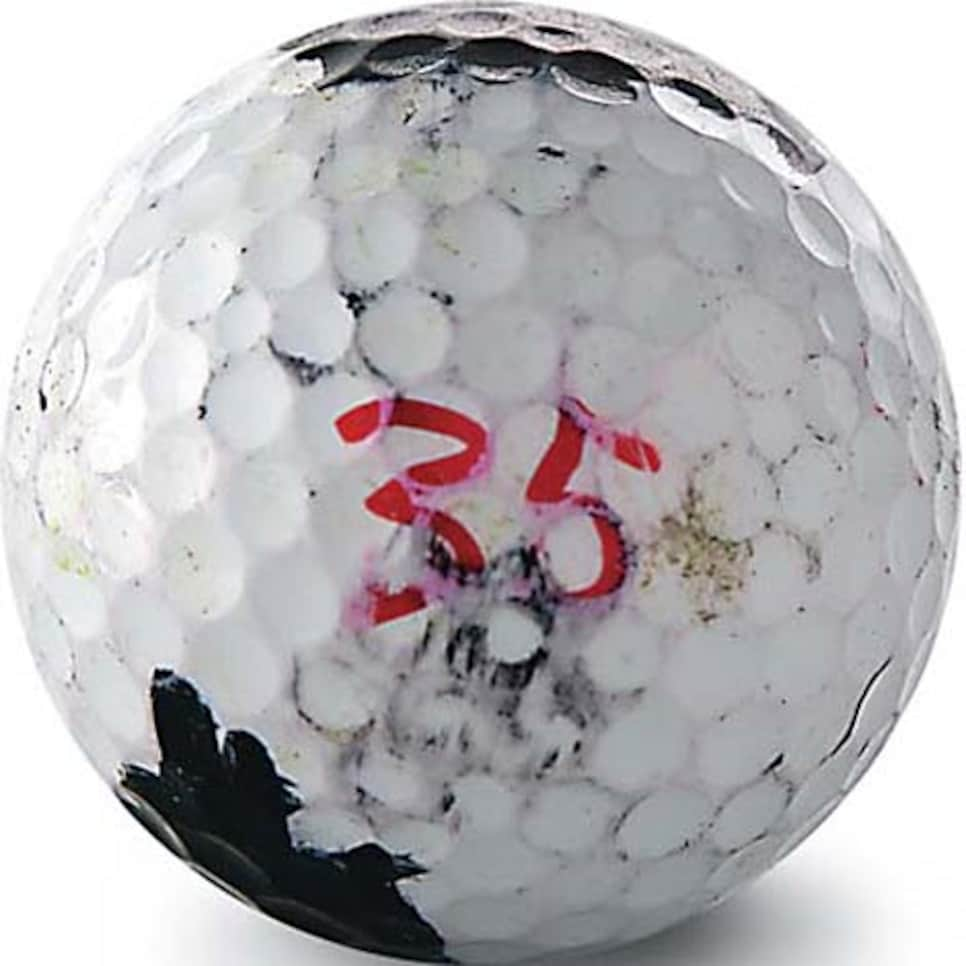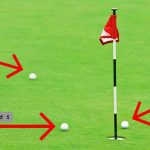Golf balls can last up to seven years if stored properly and not exposed to extreme conditions. Frequent use can reduce their lifespan.
Golfers often wonder about the durability of their equipment, especially golf balls. Understanding how long golf balls last can save money and improve game performance. Factors like storage conditions, frequency of use, and the environment can affect a golf ball’s lifespan.
Proper storage, away from extreme temperatures and humidity, can help extend their life. Regular players might notice a decrease in performance over time due to wear and tear. Keeping these points in mind ensures you get the most out of your golf balls, optimizing both your budget and your game.

Credit: www.golfdigest.com
Lifespan Of Golf Balls
Ever wondered about the lifespan of golf balls? Golfers often ask how long their golf balls will last. Understanding this can help you make better choices on the course. Let’s explore what affects their durability and how long they typically last.
Factors Influencing Longevity
Several factors influence how long golf balls last. These include:
- Usage: Frequent use wears them out faster.
- Storage conditions: Extreme temperatures can damage them.
- Water exposure: Waterlogged balls lose performance.
- Material quality: Higher quality balls last longer.
Average Duration
On average, a golf ball lasts around 7-10 rounds. This depends on the factors listed above. Here’s a simple table to understand the average duration better:
| Condition | Average Duration |
|---|---|
| Optimal conditions | 10 rounds |
| Moderate use | 7 rounds |
| Poor conditions | 3-5 rounds |
Regularly check your golf balls for damage. Replace them if you see cracks or cuts. This ensures optimal performance on the course.

Credit: www.links.golf
Material And Construction
Understanding the material and construction of golf balls can help determine their lifespan. The components and design affect their durability and performance. Let’s explore the core composition and cover materials of golf balls.
Core Composition
The core is the heart of the golf ball. It significantly impacts distance and feel. Modern golf balls often have a rubber or synthetic core.
- Rubber Core: Most common in two-piece golf balls. Offers excellent durability and distance.
- Synthetic Core: Found in multi-layer balls. Provides enhanced control and spin.
Golf ball cores are designed to retain their properties for a long time. However, exposure to extreme temperatures can affect their performance.
Cover Materials
The cover of a golf ball protects the core and influences the ball’s interaction with the clubface. Different materials provide various benefits.
| Cover Material | Characteristics |
|---|---|
| Surlyn | Durable and affordable. Common in two-piece balls. |
| Urethane | Softer, offering better control and spin. Used in premium balls. |
Urethane covers tend to wear out faster than Surlyn covers. Proper care can extend the life of your golf balls.
Effects Of Environmental Conditions
Golf balls can last a long time if taken care of properly. Environmental conditions play a crucial role in determining the lifespan of a golf ball. Exposure to various elements can affect its performance and durability. Understanding how weather and storage impact golf balls can help you extend their lifespan and maintain their quality.
Impact Of Weather
Weather conditions significantly affect golf balls. Extreme temperatures can alter their performance. Cold weather makes golf balls harder, reducing their distance. On the other hand, heat can make them softer, affecting control and accuracy.
Humidity also impacts golf balls. High humidity can cause the ball to absorb moisture. This leads to a heavier ball that travels a shorter distance. Conversely, very dry conditions may cause the ball to lose its elasticity, affecting its bounce and roll.
Storage Tips
Proper storage is key to extending the lifespan of your golf balls. Follow these tips to keep your golf balls in optimal condition:
- Keep them dry: Store golf balls in a dry place to prevent moisture absorption.
- Avoid extreme temperatures: Store them at room temperature to maintain their performance.
- Use a container: Store golf balls in a container to protect them from dust and debris.
- Rotate your stock: Use older balls first to ensure none go to waste.
By considering these environmental factors, you can ensure your golf balls last longer and perform better on the course.
Signs Of Wear And Tear
Understanding the signs of wear and tear on your golf balls is important. It helps you know when to replace them. This ensures you maintain optimal performance during your game. Below, we explore the key indicators that show your golf balls need replacing.
Visible Damage
Inspect your golf balls for visible damage. Look for cracks, scuffs, or cuts. These imperfections can affect the ball’s flight and roll. Use a bright light to spot minor damages. Even small nicks can impact performance.
- Cracks: Breaks in the outer layer.
- Scuffs: Surface abrasions from rough surfaces.
- Cuts: Deep gashes from sharp objects.
Performance Changes
Changes in performance are another sign of wear. Notice if the ball does not travel as far. Pay attention to any inconsistencies in flight. A used ball may not spin as much. This affects your control over the ball.
- Distance: Reduced travel distance.
- Flight: Inconsistent air travel.
- Spin: Lower spin rates affect control.
Regularly check your golf balls for these signs. Keeping an eye on wear and tear can improve your game. You will have better control and more accurate shots. Do not let worn-out golf balls hinder your performance.
Testing Golf Ball Durability
Understanding how long golf balls last is crucial for every golfer. Testing their durability helps determine their longevity. Various tests can assess a golf ball’s resilience. These include compression tests and field testing.
Compression Tests
Compression tests measure a golf ball’s resistance to deformation. This test shows how well the ball maintains its shape.
- High compression: Suitable for high-speed swings. These balls last longer.
- Low compression: Better for slower swings. These may wear out faster.
| Compression Level | Durability |
|---|---|
| High | Long-lasting |
| Low | Shorter lifespan |
Regular compression testing ensures you use the right ball for your swing.
Field Testing
Field testing involves using golf balls in real conditions. This assesses their performance over time. Factors like weather and ground conditions affect durability.
- Sunny weather: Balls last longer. Less wear and tear.
- Wet conditions: Balls degrade faster. Moisture affects the core.
Field testing provides a realistic measure of a ball’s lifespan. Play in various conditions to see how your golf balls hold up. Regularly check for signs of wear and tear. Replace them as needed to maintain optimal performance.
Maximizing Golf Ball Lifespan
Golf balls are essential for every golfer. Their lifespan can affect your game. By following some tips, you can maximize their use. This section covers proper handling and maintenance tips.
Proper Handling
Proper handling of golf balls is crucial. Always store them in a cool, dry place. Extreme temperatures can damage their material.
- Avoid exposing golf balls to direct sunlight.
- Keep them away from moisture.
- Store them in a protective case or container.
Never leave golf balls in your car. The heat can cause them to expand. This will reduce their performance.
Maintenance Tips
Regular maintenance can extend the life of your golf balls. Clean them after each use. Dirt and grass can affect their flight.
- Use a soft cloth or sponge.
- Avoid using harsh chemicals.
- Inspect for cracks or damage regularly.
If you find any cracks, replace the ball. Even small cracks can affect your game. Rotate your golf balls to ensure even wear. This will help maintain consistent performance.
| Maintenance Task | Frequency |
|---|---|
| Cleaning | After each use |
| Inspection | Weekly |
| Rotation | Every game |
By following these tips, you can enjoy your golf balls longer. Proper handling and regular maintenance are key. Happy golfing!
Economic Considerations
Golfers always want to get the best value for their money. Understanding the economic considerations of golf balls can help in making smart decisions. This section explores the balance between cost and durability, and the benefits of buying in bulk.
Cost Vs. Durability
Durability is a crucial factor in selecting golf balls. Higher-end balls often come with a higher price tag but offer better longevity. Cheaper balls may wear out quicker, leading to frequent replacements.
Consider the table below to compare the cost-effectiveness of different golf ball types:
| Golf Ball Type | Average Cost per Ball | Estimated Durability (Rounds) |
|---|---|---|
| Premium | $4.00 | 10 |
| Mid-range | $2.00 | 5 |
| Budget | $1.00 | 2 |
Premium balls offer better performance and durability, thus justifying their higher cost. Mid-range balls strike a balance between cost and longevity. Budget balls are cheaper but may need frequent replacements.
Buying In Bulk
Purchasing golf balls in bulk can save money. Buying larger quantities often reduces the cost per ball.
Here are some benefits of buying in bulk:
- Lower cost per ball
- Reduced need for frequent purchases
- Always having a supply on hand
Consider the savings from buying different quantities:
| Quantity | Cost per Ball | Total Cost |
|---|---|---|
| 12 Balls | $2.00 | $24.00 |
| 24 Balls | $1.80 | $43.20 |
| 48 Balls | $1.50 | $72.00 |
As seen, buying 48 balls reduces the cost per ball significantly. Bulk purchasing can be a smart choice for frequent players.
Choosing The Right Golf Ball
Choosing the right golf ball is crucial for better performance. The right ball can improve your game significantly. Let’s explore some key factors.
Skill Level
Your skill level plays a big role in choosing a golf ball. Beginners should use softer balls. These balls have more forgiveness and are easier to control.
Intermediate players need balls with a good balance of control and distance. Advanced players should select high-performance balls. These offer precision and enhanced control.
Playing Conditions
Playing conditions affect the choice of a golf ball. Windy conditions require low-spin balls. These reduce the ball’s curve and help maintain direction.
For wet conditions, choose balls with more grip. This helps in better control and reduces slipping. Dry and firm conditions call for balls that provide more roll and distance.
https://youtu.be/Z2ND9mXlmSc?si=t2RTZgbQAoZC7-T6
Frequently Asked Questions
Can Golf Balls Go Bad If Not Used?
Yes, golf balls can degrade over time. Exposure to extreme temperatures and moisture can damage their performance. Store them properly.
How Can You Tell If A Golf Ball Is Still Good?
Check for cracks, discoloration, and scuffs. Drop it in water; if it sinks, it’s still good. Test its bounce.
How Many Rounds Can A Golf Ball Last?
A golf ball can last up to 7 full rounds. Performance may decline due to damage or wear.
When Should You Replace A Golf Ball?
Replace a golf ball when it shows visible damage, scuffs, or cuts. Also, change it after 7-10 rounds.
Conclusion
Understanding the lifespan of golf balls can improve your game and save money. Proper storage and care extend their usability. Regularly check for wear and replace as needed. Invest in quality golf balls for better performance on the course. Keep these tips in mind to enjoy consistent, long-lasting play.





